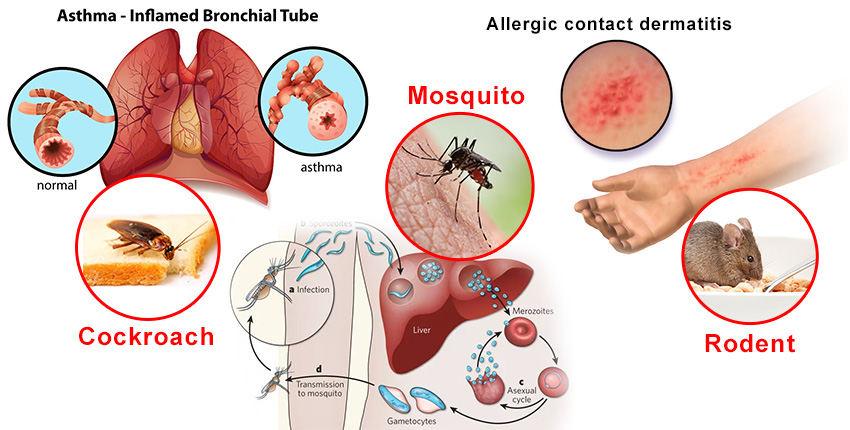Rumored Buzz on Eco Bed Bug Exterminators Dc
Rumored Buzz on Eco Bed Bug Exterminators Dc
Blog Article
Indicators on Eco Bed Bug Exterminators Dc You Need To Know
Table of ContentsThe smart Trick of Eco Bed Bug Exterminators Dc That Nobody is Talking AboutThe smart Trick of Eco Bed Bug Exterminators Dc That Nobody is DiscussingGetting The Eco Bed Bug Exterminators Dc To WorkFascination About Eco Bed Bug Exterminators DcLittle Known Questions About Eco Bed Bug Exterminators Dc.
Since pesticides are harmful, they are additionally potentially dangerous to humans, pets, other microorganisms, and the setting. People who utilize pesticides or frequently come in call with them have to comprehend the relative poisoning, possible health impacts, and preventative measures to lower exposure to the products they utilize. Hazard, or danger, of making use of chemicals is the possibility for injury, or the level of risk associated with using a pesticide under a given set of conditions.
However, applicators can minimize or almost remove direct exposure-- and therefore decrease danger-- by complying with the tag instructions, making use of individual safety clothes and devices (PPE), and taking care of the chemical properly. For instance, even more than 95 percent of all chemical direct exposures originate from facial direct exposure, mainly to the hands and forearms. By putting on a pair of unlined, chemical-resistant gloves, this sort of exposure can be almost eliminated.
The dangerous effects that occur from a solitary direct exposure by any type of path of entry are termed "intense impacts." The four routes of direct exposure are facial (skin), inhalation (lungs), dental (mouth), and the eyes. Intense toxicity is identified by taking a look at the facial poisoning, inhalation poisoning, and oral toxicity of guinea pig.
Unknown Facts About Eco Bed Bug Exterminators Dc
Severe poisoning is gauged as the amount or focus of a toxicant-- the a.i.-- required to eliminate 50 percent of the pets in a test population. This measure is typically expressed as the LD50 (lethal dose 50) or the LC50 (deadly concentration 50). Additionally, the LD50 and LC50 values are based on a single dose and are videotaped in milligrams of pesticide per kilo of body weight (mg/kg) of the test pet or in parts per million (ppm).
The lower the LD50 or LC50 value of a chemical product, the official source greater its toxicity to humans and animals. Chemicals with a high LD50 are the least toxic to human beings if made use of according to the instructions on the product label. The chronic toxicity of a pesticide is identified by subjecting test pets to long-term direct exposure to the energetic ingredient.
The chronic toxicity of a pesticide is more hard than acute toxicity to determine via research laboratory evaluation. Products are categorized on the basis of their relative acute toxicity (their LD50 or LC50 values). Chemicals that are classified as extremely toxic (Toxicity Group I) on the basis of either oral, facial, or inhalation toxicity have to have the signal words risk and POISON printed in red with a head and crossbones icon plainly displayed on the front panel of the package label.
The severe (single dose) oral LD50 for pesticide items in this group ranges from a trace quantity to 50 mg/kg. As an example, direct exposure of a few declines of a product taken orally could be deadly to a 150-pound person. Some chemical items have just the signal word risk, which tells you absolutely nothing regarding the intense poisoning, simply that the product can trigger serious eye damage or extreme skin irritability
The 7-Minute Rule for Eco Bed Bug Exterminators Dc
In this classification, the acute oral LD50 ranges from 50 to 500 mg/kg. A tsp to an ounce of this product could be deadly to a 150-pound person (exterminator). Pesticide items categorized as either slightly poisonous or reasonably safe (Toxicity Classifications III and IV) are needed to have the signal word care on the pesticide tag

All pesticide toxicity values, including the Consisting of, can be found on the product's Item Safety Product Security (MSDS). Pesticide tags and MSDS can be obtained from retailers or manufactures - https://trello.com/w/ecobedbug3xt_. The signs of pesticide poisoning can range from a light skin irritability to coma or even fatality.
Individuals likewise differ in their sensitivity to different degrees of these chemicals. Some individuals may show no reaction to an exposure that may cause severe disease in others (how to get rid of bed bugs). Due to prospective health and wellness problems, pesticide customers and trainers have to identify the typical symptoms and signs of pesticide poisoning. The impacts, or symptoms, of pesticide poisoning can be generally defined as either topical or systemic.
The Eco Bed Bug Exterminators Dc Ideas
Dermatitis, or swelling of the skin, is accepted as the most typically reported topical result linked with chemical exposure. Some people often tend to cough, hiss, or sneeze when subjected to chemical sprays.
This symptom generally subsides within a couple of mins after a person is gotten rid of from the exposure to the irritant. Nevertheless, a response to a chemical item that creates somebody not only to sneeze and cough but also to create severe acute respiratory signs and symptoms is much more likely to be a true hypersensitivity or allergy.
Systemic results are rather various from topical effects. They commonly happen away from the original factor of call as an outcome of the chemical being soaked up right into and distributed throughout the body.
Report this page